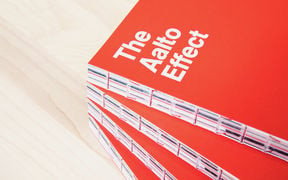Science makes ships lighter and more environmentally friendly

Heikki Remes:
I am an Assistant Professor of Marine Technology, and my field of research is advanced ship structures. We look for solutions to the large global challenges within the engineering sciences, like how to build and maintain large-scale social infrastructure that is sustainable and energy efficient for coming generations.
The solution is science-based structural design which combines theoretical modelling, experimental research and digital technologies. The same principle can also be applied in the design of other large steel structures such as skyscrapers and steel bridges.
Cruise ships are, in fact, Finland’s largest individual export product. One cruise ship costs over €1 billion, and total sales amount to around 1.5% of Finland’s international exports. The size of the ships has gradually increased from the 1970s up to the present day, but the next generation of ships will be lighter, more energy-efficient, more user-friendly, and more competitive. At the moment, the objective is to produce a ship with a steel weight 20% lower than current levels.
In our marine technology research group, we examined three strategic factors in ship design: new kinds of structural solutions, use of high-strength steel, and efficient structural design. In science-based structural design, these three areas are combined.
Using theoretical modelling that covers different levels of scale we can discover, for example, how the properties of the materials used affect the strength of the structure, and what kind of materials are needed for making this new ship concept a reality.
At the same time, we can use digital measurement technology to specify the geometrical and material properties of the finished structure. A good example of this is the thin superstructures of ships, where the strength of the metal sheet has been reduced from six millimetres to four. In millimetres, this is a small number, but the impact on the weight of the vessel is large.
Although the classification rules for ships do not yet allow the use of high-strength steel in vessel structures, we have observed that a bulkhead structure constructed from high-strength steel, for instance, better withstands applied loads than a traditional steel structure.
The use of high-strength steel combined with thinner superstructures would a decrease of hull weight by between 15 and 20 percent possible. This would mean that an extra cabin deck could be added to the cruise ship, or alternatively the ship’s energy consumption could be reduced. The new structures also make possible a new kind of cabin design: our students have designed a two-storey cabin module which has caught the interest of shipbuilders in other countries, as well.
Innovations utilised in the industrial sphere require scientific breakthroughs.
For this reason, basic scientific research is foundational for impact maximisation. At the same time, however, producing more knowledge and innovations creates the need for more industrial experts that are able to put this research into use at the practical level. In marine technology, we focus on educating masters of science in engineering, doctors of engineering, and postdoctoral researchers. Our research group is continually developing new marine technology researchers that have succeeded excellently in finding employment in different parts of the world as specialists and professors ― to continue researching and training others.
From clean energy to personalized medicine – a book about the power of the university
The Aalto Effect is a tribute to the ambitious and uncompromising work of dozens of researchers.

- Published:
- Updated:
Read more news

Aalto in 2024: Love pictured in the brain, wooden crystals that make fashion shine, recovering minerals from wastewater and more
This year has been another feast of science and art at Aalto University
Pengxin Wang: The internship was an adventure filled with incredible research, unforgettable experiences, and lifelong friendships.
Pengxin Wang’s AScI internship advanced AI research, fostered global friendships, and inspired his journey toward trustworthy AI solutions.
Major grant from the Kone Foundation for modern architecture research - Laura Berger's project equates building loss with biodiversity loss
Aalto University postdoctoral researcher Laura Berger and her team have been awarded a 541 400 euro grant from the Kone Foundation to study the effects of building loss on society and the environment.